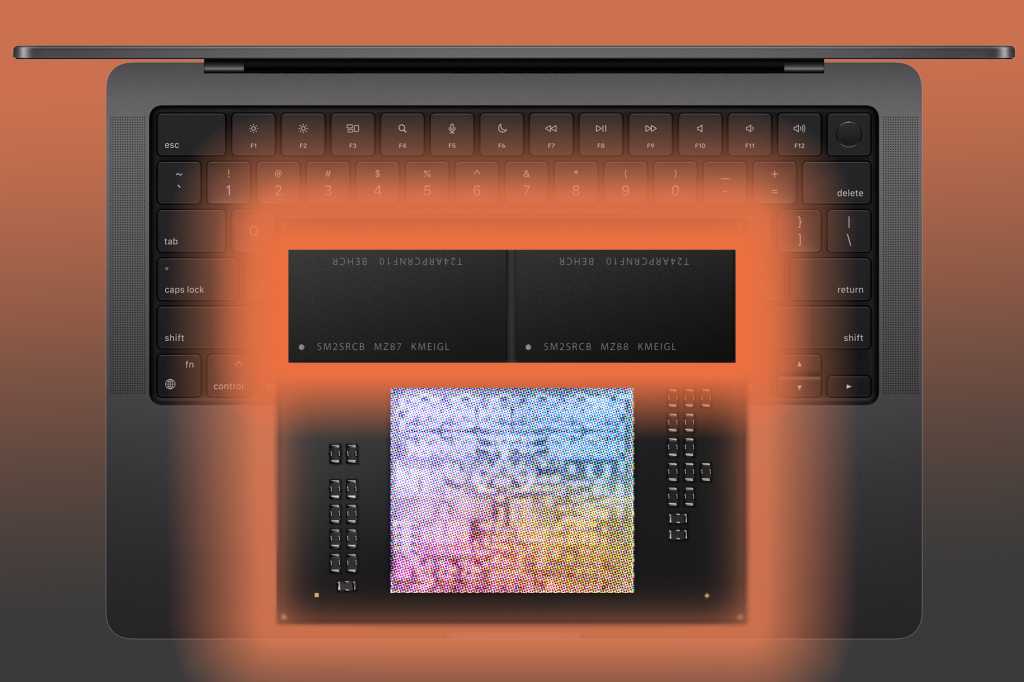Apple has a memory problem and we’re all paying for it::Apple still sells expensive “Pro” computers with just 8GB of RAM and charges a fortune for more.
We are? Pretty sure I ain’t.
Yeah, I’m not complaining either
“we’re all paying for it”
Journalism these days is fucking awful
Maybe not this specific thing, but Apple is super influential on the industry as a whole and when other companies see people tolerate Apple’s bullshit, they follow suit.
Yep. I am reminded of 3.5mm audio jack being removed from phones because Tim Cook was ‘brave’.
That is in the context of “Apple customers”.
Just a thought.
If I’m being generous, it’s macworld.com speaking to an audience of Apple users.
But no, I am not paying for it. I’m over here drooling at M1 chips, but then stopping when I see the baggage that comes with it.
Ms are only worth drooling over as far as power consumption. Relatively cheap 7840u outperforms M2 in every benchmark. I9s are just in a completely different league.
I’ll wait for Snapdragon X Elite from a more reasonable company or a RISC-V chip in a Linux laptop if stars really align.
Damn. I wish there was some other alternative
I absolutely love Apple Silicon—the performance to power ratio is wonderful, and the high-speed memory makes things like LLMs work great—but the RAM upcharge is insane, and shipping anything “Pro” with 8GB of RAM should be criminal in 2023.
I really hope that Qualcomm can make some noise with their new laptop/desktop processors. Anything to light a fire under Apple’s ass and make them stop skimping on RAM.
Microsoft’s exclusivity deal with Qualcomm expires soon, so there should be more options coming around. After all this time, RISC will finally change everything (without getting into the technical details of how it did already).
I cannot +1 this hard enough. There was once upon a time, back in the Darwin days, when I had my eyes on a Macbook as my next computer. Apple Silicon almost got me there again. I’m itching for a Snapdragon X Elite Oryon OMGLOLBBQ SBC, but I’m not holding my breath. I bet laptop makers snap up all the chips for 2024, and then I get one in 2025.
laughing from my 64gig 1000 eur tuxedo :p
I remember back in the 90’s when some Macintosh computers came with resistors making them slower, so that Apple could sell “budget” models of their faster line of computers.
We were savvy and would remove them, but I bet 99% of buyers had no clue and just went along with it.
How did that work? Some kind of jumper that set the clock rate?
I have honestly no clue, it was a long time ago, but I could imagine many ways a simple resistor could impact overall performance to a very specific degree.
It’s even worse when you consider there’s no dedicated video memory, so this is shared between graphics and the rest of the system.
[…] we’re all paying for it
How? How am I paying for Apple’s shortcomings?
I’ve always been interested in if there were a way to bake more RAM onto these boards. Presumably the pads are there and they’re just not populated, so could you make a stencil for the solder balls with a cnc and buy another RAM chip and stick it in to one of those directed heat platforms. Would macos accept that, or would it throw a hissy fit because of miss matched licenses.
Knowing how hard Apple locks down their hardware, I’m sure each RAM module has some sort of signature that disallows this sort of thing.
Yeah MacOS has the best virtual memory system of any major OS (if you’re running Linux try https://github.com/Tookmund/Swapspace, it’s excellent!) so most people don’t care, because they never really run out of memory. But 8GB is inexcusable for a “Pro” product, and their upcharges for RAM are laughably priced.
Edit: I said that MacOS has the best virtual memory system of modern OS’s. I stand by that. I also criticized Apple for their asinine pricing, which I stand by.
I got downvoted for those statements
Let’s compare virtual memory systems
Windows uses a pagefile, similar to how MacOS handles virtual memory. However, when an application needs more memory on the fly, the Windows subsystem throws an out of memory error. You can for loop a try/catch until the pagefile size changes, but if someone has hardcoded the pagefile size in their prefs, or windows hasn’t finished generating a larger pagefile, it will continue to throw a memory error. All windows memory requests are the same, but windows only virtualizes the requests off hardware once the memory pressure is too high.
Linux uses swap. You either have swap partitions or swap files. Both are manually specified in size. If you exceed the size of the swap partition or swap file, out of memory error. That can be avoided by using the software I referenced above, which will generate a new swap file on the fly as your memory pressure builds. Again, Linux allows all memory requests to be on hardware until the RAM is full, and then begins storing memory to swap.
All of MacOS memory is virtualized. Applications requesting real hardware memory are always getting virtual memory pages. As memory pressure increases, so does the size of hyberfil.sys, the Mac pagefile, but applications can request more memory, and get it allocated, with no out of memory errors, it’s seamless. When you know your hardware is running on a fast SSD, you can do that because for most users it’s not noticeable in their day to day activities. But pro users need hardware memory for things like video editing. So MacOS let’s you request wired memory but is limited based on the total memory usage, after you request wired memory, your requests are granted but potentially granted and then returned on request as being passed through to virtual memory, if necessary when the memory pressure is too high.
I’m not cos I don’t pay a fuck to apple, in fact I buy cheap apple shit and resell it to dumb apple lovers Haha.
Damn, even my phone got 8GB memory
No, YOU are all paying for it 😏
Exactly! I bought the last Mac Mini with upgradeable ram and got it from 8gb to 64gb for less than going to 16gb factory installed would cost me. After this one is done, I’m not sure I can justify buying another one.
There’s something called "PC"s out there. They can even play games .







